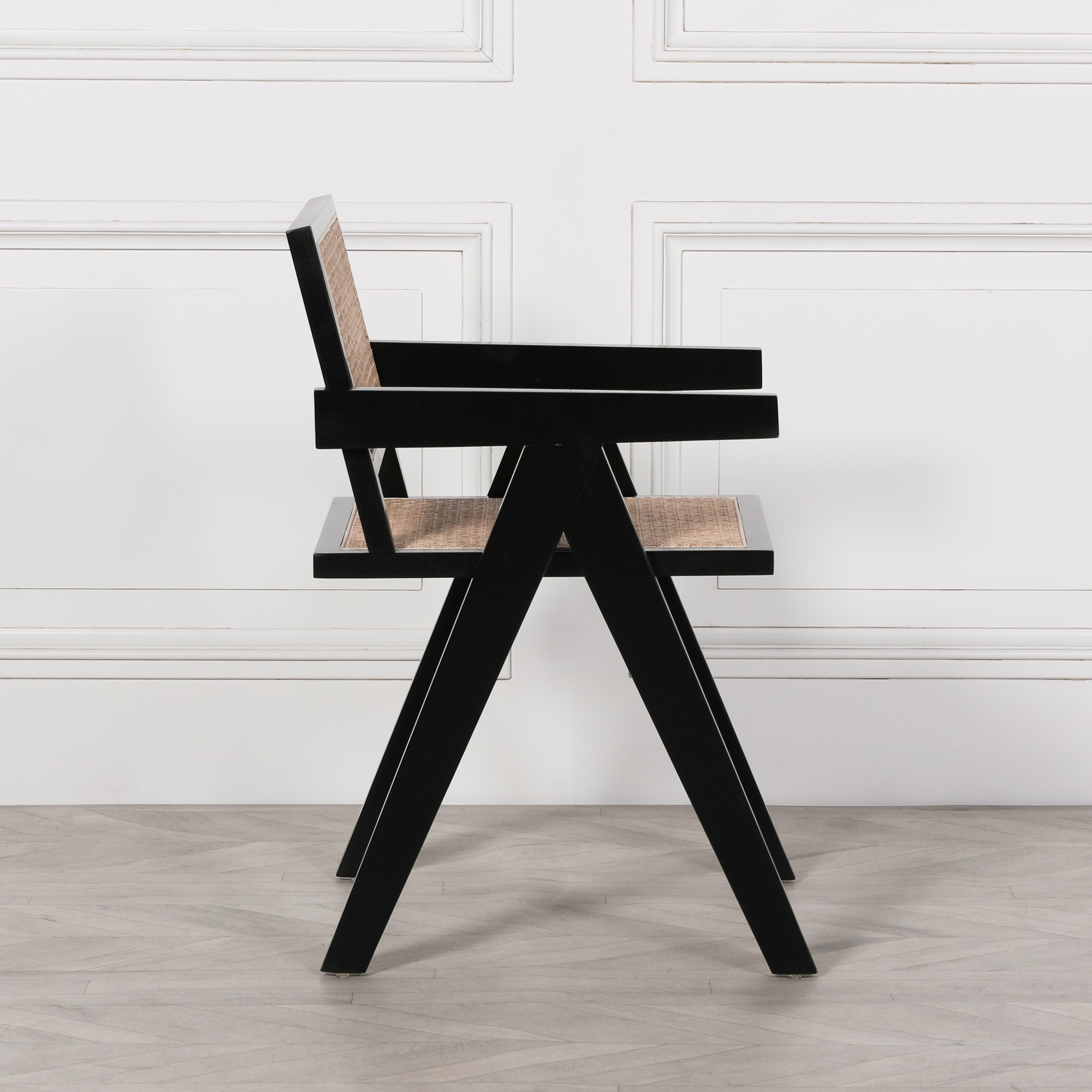Manufacturing & Materials of Black Cane Dining Chairs: Cane Dining Chair Black

The creation of a black cane dining chair is a fascinating blend of traditional craftsmanship and modern manufacturing techniques. From the sourcing of raw materials to the final finishing touches, each step contributes to the chair’s unique aesthetic and functionality. This process involves a careful selection of materials, precise assembly, and a commitment to quality.
The manufacturing process begins with the harvesting of rattan cane. This naturally occurring material, a type of climbing palm, is carefully selected for its strength, flexibility, and even color. After harvesting, the cane undergoes a series of treatments to prepare it for weaving. This may involve cleaning, drying, and potentially bleaching or dyeing to achieve the desired black color.
Cane Selection and Properties
Several types of cane are suitable for chair construction, each possessing unique properties. Rattan, with its tensile strength and flexibility, is a popular choice. Other varieties, like seagrass or bamboo, might be used for specific parts of the chair depending on the desired aesthetic and structural needs. Rattan’s high tensile strength allows it to withstand significant stress, making it ideal for the chair’s frame. Its flexibility enables skilled artisans to create intricate woven patterns, adding visual appeal. Seagrass, while less strong than rattan, offers a more rustic look and is often used for seat weaving. The choice of cane impacts the chair’s durability and overall lifespan. A chair constructed with high-quality, well-treated rattan will likely last considerably longer than one made with a less durable material.
Manufacturing Steps
The manufacturing process typically involves several key steps:
- Frame Construction: The chair’s frame is usually constructed from hardwood, such as oak or beech, chosen for its strength and stability. These pieces are cut, shaped, and joined using traditional joinery techniques or modern methods like doweling and screws.
- Cane Preparation: The harvested and treated cane is then prepared for weaving. This may involve splitting the cane into thinner strips, shaping them, and ensuring consistent thickness for uniform weaving.
- Weaving the Seat and Back: Skilled craftspeople weave the cane onto the prepared frame. This is a labor-intensive process requiring precision and skill to create a strong, aesthetically pleasing seat and back. Different weaving patterns can be employed to achieve varied visual effects.
- Finishing: Once the weaving is complete, the chair undergoes a finishing process. This might involve applying a sealant to protect the cane from moisture and wear, ensuring longevity and enhancing the black color. A final quality check ensures that the chair meets the required standards.
Sustainability of Cane in Furniture Manufacturing, Cane dining chair black
Cane’s sustainability profile compares favorably to many alternative chair materials. Unlike many hardwoods, rattan is a rapidly renewable resource, requiring less time to mature than many tree species. Its cultivation can often support biodiversity and improve soil health. However, unsustainable harvesting practices can negatively impact natural cane populations. Responsible sourcing is crucial to ensure the long-term viability of cane as a sustainable material. Compared to materials like plastic, which are derived from fossil fuels and contribute significantly to pollution, cane offers a more environmentally friendly alternative. Similarly, while metal chairs can be durable, their production involves energy-intensive processes and often requires mining, which has its own environmental impacts. The overall environmental impact of cane furniture hinges on responsible sourcing, sustainable cultivation, and efficient manufacturing processes.
